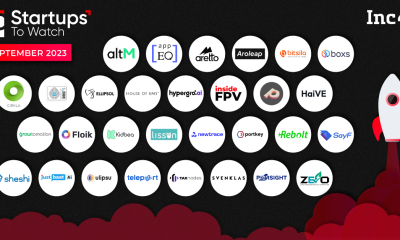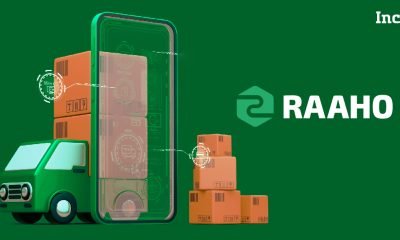I associate lots of things with moving — stress; cursing landlords for raising the rent. But mostly, I think of cardboard boxes — big ones; small ones; half-opened boxes that linger for several weeks in my new home until I find a spot for all my stuff; and finally, piles of cardboard waiting for recycling day once those boxes are broken down.
Science
Plastic bins: better than boxes

After I decided to move late last year, I braced myself for yet another Boxpocalypse. I was griping about it in a group chat when a friend asked, “Have you considered renting plastic bins?”
Plastic bin pros
For the past decade or so, plastic bins have emerged as an alternative to cardboard boxes. They’re reusable, water resistant, and sturdier than even the most heavy-duty cardboard options. Since they’re stackable, they also take up less space.
You can buy your own bins or rent them. If you buy them, that makes them an appealing candidate for QR moving labels, which let you scan the label with your phone to see a photo or inventory list of the bin’s contents. If you rent them, a set of bins gets dropped off at your home and you pack up your life and move. In a few weeks, those bins get picked up from your new home.
If, like me, you plan on renting bins, there’s actually a fair amount of research that you have to do. Here are some of the things I learned to take into consideration before starting a move using bins.
What kind of service do you need?
First: are you hiring movers or doing everything yourself? If it’s the former, it’s much more convenient (albeit pricier) to find a moving company that offers bin rentals and handles the move for you. But if you’re renting a U-Haul and calling in favors from friends and family, you may find it easier to pick a bin rental company that only rents bins. That way, there’s no need to worry about getting upsold on additional moving services.
Check your company’s service area, prices, and rental period
Prices vary depending on how many bins you rent and whether you choose service bundles. That said, bins tend to cost between $5 to $6 per bin on average, not including taxes.
In my case, I was moving across state lines, and while all the companies I checked out would drop off the bins for free, some wouldn’t pick them up from my new home. I’d either have to pay an extra pickup fee, drop them off myself, or find a company that serviced my new neighborhood as well as my old one. I was only moving across the border from New York to New Jersey, but even then, I had to cross a lot of companies off the list.
In the end, although I had to pay extra fees for moving across state lines and the stairs in my new home, I got a decent price: $5 a pop, or $150 total for 30 bins.
You’ll also want to confirm the rental period. Some companies have a strict window and won’t let you extend it. Some offer free extensions, while others do so for a fee.
You’ll also want to check if there’s a minimum number of bins that you must rent. I wanted to order bins a la carte, and I only found one company in my service area that would do it — so long as I rented at least 15. The rest had rental packages based on the size of the room.
What’s included?
Most companies include labels, zip ties, delivery and pickup, and an assortment of bin sizes. But if you rent the bins from a moving company, it’s not guaranteed they’ll move the bins into your home for free. A handful of companies I researched only included moving bins onto the ground floor — multiple floors and apartments without elevators came with an added fee. I moved into a four-story townhouse and would’ve been charged per floor. We ended up paying a fee to have the movers drop off all the bins on the second-floor living room and got in our cardio schlepping the bins destined for the third and fourth floors ourselves.
The ecological choice
Bins are also touted as a more sustainable option than cardboard boxes because they’re reusable and produce less waste. Bloomberg reports that residential cardboard recycling lags far behind that of businesses, partly thanks to the boom in e-commerce. The US Department of Energy’s National Renewable Energy Laboratory found that 56 percent of paper and cardboard waste ended up in landfills and that only 38 percent of cardboard is actually recycled. As much as that number makes me cringe, I also can’t deny that breaking down cardboard boxes is one of my most hated weekly chores.
Packing up
Packing bins isn’t all that different from boxes, though there are quirks.
In past moves, I preferred smaller boxes for heavy or fragile items. However, the company I went with only offered one bin size: large. (Others offer medium and large-sized bins.) Luckily, that didn’t end up being a huge issue. I just had to be more strategic about weight distribution. With some towels and T-shirts for padding, my fragile items made the move intact.
Because bins have interlocking and stackable lids, you don’t have to use tape to close them. Once I was done packing a bin, I just plopped it neatly on top of another, saving space in my cramped New York City apartment. And plastic is water resistant — nobody likes moving on a rainy day, but soggy cardboard makes it worse.
Remember that these bins will have been through many moves
On the other hand, remember that these bins will have been through many moves. While the insides were clean, the outsides of my bins were covered in black Sharpie, with the names of rooms scribbled in various handwriting. One bin had transported things meant for one person’s kitchen, another’s living room, and yet another’s bedroom. The bins also had remnants of other people’s poorly removed moving labels, leaving me hardly any space to write which rooms to place the bins for my move. This meant they weren’t a good option for QR labels, which was a bummer.
Moved and done
What really sold me on using bins was that they come with a time limit: you have to return them after a two-week period. This was the fastest unpacking job I’ve ever done. It was stressful, but by the time the delivery men came to pick up all 30 bins, I was a week into the move and 90 percent done. That helped me relax into my new home a lot faster.
Plastic bins might not be for everyone — but you won’t see me moving with cardboard boxes anytime soon. Switching to bins made moving much less nightmarish than it’s been in the past. That extra convenience — and the fact that I am four months into my move with nary a cardboard box in sight — was well worth it.
Science
Neon’s 2073 paints a bleak picture of the future in new trailer

Director Asif Kapadia is best known for his documentaries chronicling the lives of entertainment icons whose work left indelible marks on the worlds of music and sports. But his next feature looks like a nightmarish vision of a future that feels all too possible.
Though 2073, Kapadia’s new film, features plenty of archival news footage from our present, it’s also a sci-fi thriller set in a distant future where years of climate-related disasters and the rise of authoritarianism have transformed the world into a dystopian hellscape. To people like Ghost (Samantha Morton) — a woman barely surviving in an apocalyptic San Francisco by keeping off the grid — it’s all too clear how societies across the globe descended into chaos. But rather than fully dramatize those moments in history, 2073 buttresses its story with real-world newsreels and interviews with journalists about how the gradual erosion of democracy in the past paves the way for a terrifying new world order.
Along with shots of various political strongmen like Vladimir Putin, Narendra Modi, Kim Jong Un, and Donald Trump, 2073’s trailer also emphasizes how Silicon Valley titans like Mark Zuckerberg play key roles in fostering the spread of fascism. And while the film doesn’t yet have a release date, as time-specific as 2073’s story seems to be, it probably won’t be long until it’s playing in theaters.
Science
EcoFlow launches four new batteries for phones, homes, and RVs

EcoFlow just launched four new battery products designed to power everything from your home appliances in the event of a blackout to your Qi2-compatible phone to RVs.
Going from most powerful to least, there’s the second-generation Power Kit to power your off-grid vanlife fantasies, the midrange Delta 3 and compact River 3 solar generators, and the Rapid Qi2 wireless power banks for phones that can also charge your laptop in a pinch.
The Power Kit v2 is a follow-up to its original all-in-one power management system I reviewed 18 months ago. The kits are designed to power everything from an off-grid cabin to a small campervan, without the complexity of having to cobble together all the required components and wiring yourself. EcoFlow says the new 5kVA 48V Power Kits are improved for RVs, quieter — a recurring complaint with the original — and offer even more storage capacity. The expanded 45kWh battery limit is enough to boondock for a week or longer if your rig is big enough to store nine hulking 5kWh LFP batteries.
The Power Hub at the heart of the system can output up to 4000W (with 8000W surge), which is more than enough to power multiple appliances simultaneously like a high-pressure espresso machine, induction cooktop, and air conditioner. It also supports a variety of inputs that can be combined to quickly charge those batteries from sources like the vehicle’s primary (or secondary) alternator, shore power, and gobs of solar.
EcoFlow’s improved Power Kits can now monitor and provide the status of water tanks and temperature sensors when configured with a new Power Link information hub. This and other changes like a larger 10-inch dedicated console display and support for more fused AC and DC circuit branches should make EcoFlow’s plug-and-play Power Kits a more capable system for even the largest land yachts.
The Delta 3 series is a medium-size solar generator that comes slathered in ports, including a pair of 140W USB-C outputs. The base model has 1kWh of storage capacity and produces up to 1800W of output while accepting up to 500W of solar input. The Delta 3 Plus model can be expanded to 5kWh with stackable battery add-ons and supports 1,000W of solar input. The Delta 3 series runs at a very quiet 30dB when producing 600W or less.
EcoFlow says the Delta 3 series can power a typical fridge for “at least five hours” in the event of a blackout. It also has a 10ms cutover feature when used as a UPS for your PC or NAS that’ll receive an HID signal to save data before shutdown.
The River 3 series is a small solar generator available in two models. The base River 3 model has 245Wh of fixed capacity with support for 110W of solar input, while the more interesting River 3 Plus has expandable capacity which starts at 286Wh and up 220W of solar charging support. The based model can produce just 300W while the Plus model doubles that to 600W — enough to power things like small space heaters and drip coffee machines. Capacity for the Plus model can be expanded to 858Wh by adding two stackable batteries that quickly attach via pogo pins. The River 3 devices also have a 140W USB-C port and can serve as a UPS for your PC.
Last but not least, EcoFlow is expanding into power banks for the first time with the Rapid series of 15W Qi2 magnetic chargers with kickstands. They also feature a built-in USB-C PD 3.0 cable to charge laptops at up to 65W. It comes in 5,000mAh or 10,000mAh models, in a choice of silver, light blue, or black.
Unfortunately, the all-important pricing information won’t be available until the official release date of each product, per the following schedule for North America:
EcoFlow says the European releases are expected a bit later in Q4.
Science
Boeing’s Starliner started making a repeating ‘pulsing’ sound yesterday

US astronaut Barry Wilmore called NASA ground crew on Saturday, asking for help with a repetitive knocking sound that was coming from the Boeing Starliner craft. The interaction was captured by a NASA Space Flight forum member, who included a recording of it in a post that was spotted by Ars Technica.
In the recording, Wilmore asks NASA crew in Houston to configure their call so that he could show them the noise, which he says is coming from the speaker inside Starliner. Then, a repetitive clanging sound with slight there’s-something-on-the-wing vibes can be heard. The Earthside crew member describes it as sounding “almost like a sonar ping.”
The mysterious sound could very well have a very mundane explanation, like the very specific type of feedback loop one person on Reddit compared it to. At the very least, neither Wilmore nor the NASA ground team member he spoke with seemed particularly concerned (even if it does sort of resemble the unnerving Ganado theme from Resident Evil 4).
Boeing’s Starliner is currently scheduled to undock on September 6th for an automated, uncrewed return to Earth, leaving its original intended passengers, Wilmore and fellow astronaut Sunita Williams, behind on the ISS until early next year.
-

 Startup Stories11 months ago
Startup Stories11 months agoWhy Millennials, GenZs Are Riding The Investment Tech Wave In India
-

 Startup Stories11 months ago
Startup Stories11 months agoStartups That Caught Our Eyes In September 2023
-

 Startup Stories11 months ago
Startup Stories11 months agoHow Raaho Is Using Tech To Transform India’s Fragmented Commercial Trucking
-

 Startup Stories10 months ago
Startup Stories10 months agoMeet The 10 Indian Startup Gems In The Indian Jewellery Industry’s Crown
-

 Crptocurrency6 months ago
Crptocurrency6 months agoLither is Making Crypto Safe, Fun, and Profitable for Everyone!
-

 Startup Stories11 months ago
Startup Stories11 months agoHow Volt Money Is Unlocking The Value Of Mutual Funds With Secured Lending
-

 E-commerce11 months ago
E-commerce11 months agoTop Online Couponing Trends To Watch Out For In 2016
-

 Startup Stories11 months ago
Startup Stories11 months agoWhy Moscow-Based Kladana Considers Indian SME Sector As The Next Big Market For Cloud Computing




